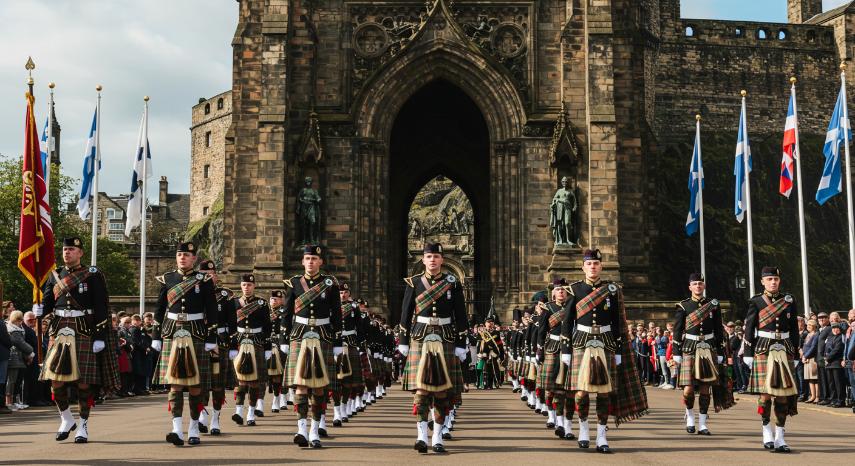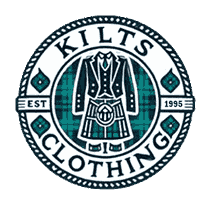Formal Kilts in the Military: A Historical Perspective on Regimental Dress

The kilt symbolizes Scottish pride and tradition and profoundly connects to military history. Its association with the Scottish Highlands and Highland regiments has turned it into an iconic garment that speaks not only to cultural heritage but also to valor, honor, and discipline. The formal kilt, especially in the context of military regalia, has evolved over centuries, becoming an essential part of the military uniform for several nations. This blog deeply delves into how formal kilts became integral to regimental dress, particularly in the British and Scottish military. It explores their continued presence in military attire today.
1. The Origins of the Kilt in Scottish Military History
Kilts were not always the formal military wear they are today. The history of the kilt in Scotland dates back to the 16th Century, with the garment initially being a practical piece of clothing worn by Highland Scots. The early version of the kilt was a long, full-length woolen garment known as the "belted plaid," which covered the body like a cloak. It was a versatile and durable piece of clothing, ideal for the harsh conditions of the Scottish Highlands.
The kilt's transition from everyday wear to military attire began with the formation of the Scottish Highland regiments. These regiments were mainly comprised of Highland clans, who often wore the traditional kilt as part of their uniforms. However, it wasn't until the 18th Century that the kilt became a formal military garment. In the aftermath of the Jacobite Rebellions, the British government began incorporating the kilt into the official regimental dress of the Highland regiments, marking the beginning of the military kilt's rise to prominence.
2. The Development of Regimental Kilts
The 19th Century saw the kilt firmly establish itself as an essential part of Scottish regimental uniforms. The British Army's Highland regiments, which included the Royal Scots, the Gordon Highlanders, and the Black Watch, were among the first to adopt kilts as their official dress. Using kilts in regiments became a symbol of Scottish identity and heritage, and military leaders played a key role in popularizing the garment.
The kilt's formalization in military dress was a strategic move, not just for cultural reasons but for practical ones. Highland soldiers had long-worn kilts during battle, and the British Army saw the kilt's potential to add to the unique identity of their regiments. Kilts with sporrans, belts, and other ceremonial accessories contributed to a striking and instantly recognizable military look. The formal regimental kilts were designed to showcase the soldiers' heritage and their pride and loyalty to their regiments.
3. The Role of Kilts in the Highland Regiments
Kilts became synonymous with the Highland regiments, which played a crucial role in many of the British Army's most significant battles. Scottish Highland soldiers proudly wore their kilts during the Napoleonic Wars and later the World Wars, regardless of the harsh weather conditions or rugged terrain. Although not practical for combat in some situations, the kilt was seen as a symbol of the soldiers' courage and unique military heritage.
During these battles, the kilted regiments were often tasked with important military missions, and their distinctive dress made them stand out. The kilt was a sign of their elite status within the army, and soldiers were often admired for their resilience and bravery in battle. With its colorful tartan and carefully tailored design, the military kilt was not just a piece of clothing—it became a symbol of honor, tradition, and heritage that soldiers wore with immense pride.
4. Symbolism of the Kilt in Military Context
In addition to its physical presence, the kilt carries deep symbolic meaning within the military. The tartan pattern, often unique to specific clans or regiments, reflects the wearer's heritage. Each clan or regiment has its distinctive tartan, with colors and patterns representing their history, origins, and values. It made the kilt a practical garment and a powerful symbol of pride and belonging.
The kilt is worn with various other ceremonial items, including the sporran (a small pouch), kilt pin, belt, and hose, further contributing to its symbolic significance. Together, these components form a complete and dignified military uniform that commands respect and signifies both the strength and tradition of the Scottish military.
The military kilt also symbolizes loyalty. The soldiers who wore it were expected to uphold the values of bravery, honor, and discipline—traits intimately tied to the warrior culture of the Scottish Highlands.
5. Kilts as a Standard of Uniform: 19th to 20th Century
By the 19th Century, the kilt had become an official part of military uniforms, particularly within the British Army's Highland regiments. The regiment-specific tartan became a standardized part of the uniform, and soldiers had to wear it with pride. As the military structure evolved, kilts were adapted to meet the practical needs of soldiers in the field. Still, they continued to be worn as part of formal regalia for parades, ceremonies, and other special occasions.
During the two World Wars, kilts were adapted for combat, albeit with some modifications. While soldiers often wore traditional kilts during parades and formal events, the necessity of practicality during wartime led to shorter kilts and other alterations. These changes ensured that soldiers could move more freely while maintaining the distinctive Highland identity associated with the kilt.
6. Modern-Day Use of Kilts in the Military
Today, kilts continue to hold a place in the military, albeit in a more ceremonial role. Modern regimental kilts are worn primarily during formal events such as parades, memorial services, and official ceremonies. While the kilt is no longer worn in everyday military operations, it remains a powerful symbol of the regiments' history and traditions.
In the British Army, regiments like the Royal Highland Regiment and the Royal Scots Dragoon Guards still wear kilts as ceremonial uniforms. These kilts are designed for comfort and functionality, with modern fabrics and tailored cuts ensuring they are suitable for formal occasions and ceremonial duties. The kilts worn today are lighter and more comfortable than their historical counterparts, incorporating modern materials that make them more practical for contemporary use.
7. Kilts in Other Military Organizations Beyond Scotland
The military kilt tradition is not confined to Scotland alone. Countries with a strong Scottish heritage, such as Canada, New Zealand, and Australia, have adopted the kilt as part of their military uniforms. The Canadian Highland Regiment, for example, proudly wears kilts as part of its ceremonial dress, reflecting the country's ties to Scottish military traditions.
In New Zealand, Scottish settlers introduced the kilt into military regalia, and it has become a symbol of pride within certain regiments. Likewise, Australian units, particularly those with Scottish ancestry, have included kilts in their ceremonial attire. These countries' adoption of the kilt into their military regalia serves as a reminder of the global influence of Scottish culture and the enduring legacy of the Highland soldiers.
8. The Legacy and Influence of Military Kilts
The legacy of the military kilt extends far beyond the battlefield. The garment has influenced civilian fashion, particularly in formal and ceremonial wear. The Highland regimental dress has often been admired for its distinct style, with the kilt symbolizing tradition and Scottish pride. Today, formal kilt weddings are very famous. In many formal events, particularly weddings and cultural celebrations, the kilt is worn as a tribute to Scottish heritage.
Moreover, the military kilt remains an enduring symbol of the Scottish army legacy. The presence of kilts in modern military parades and events showcases the continued relevance of this traditional garment in honoring past sacrifices and celebrating regimental pride.
9. The Modern Significance of Kilts in Military Ceremonies
Today, kilts are an essential part of military ceremonies, not only as a symbol of heritage but also as a mark of respect for those who have served. During formal military events, including memorial services and state occasions, the kilted regiments stand as a reminder of the courage and strength of the Highland soldiers who wore them.
The ceremonial use of kilts is often accompanied by bagpipes, further enhancing the emotional and cultural significance of the garment. The sound of the pipes, paired with the striking visual of soldiers in their kilts, evokes a deep sense of history, patriotism, and reverence for the military tradition.
10. Conclusion: The Enduring Military Legacy of the Kilt
The formal kilt has proven to be more than just a piece of clothing; it symbolizes Scottish pride, military tradition, and unwavering loyalty. From its origins in the Highland regiments to its continued use in modern-day military ceremonies, the formal kilts has maintained its place as a powerful symbol of heritage and honor.
While it may no longer be worn on the battlefield, the military kilt remains a vital part of ceremonial dress, representing the enduring legacy of the Scottish military and the regimental pride that defines it.


